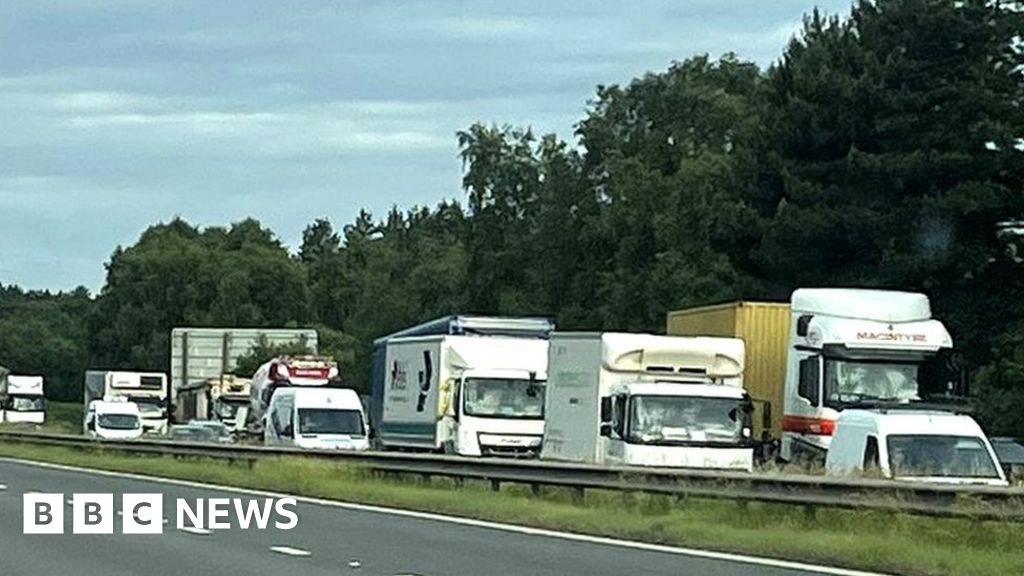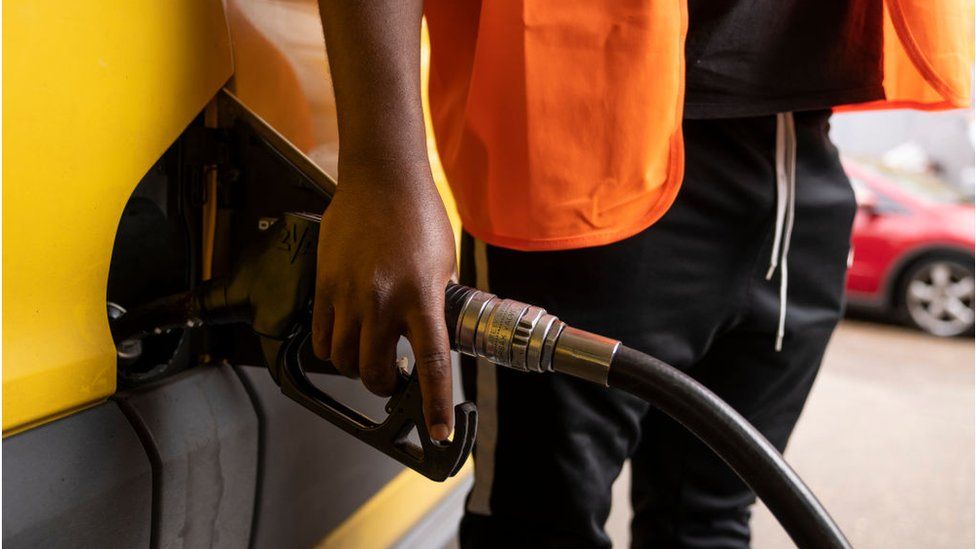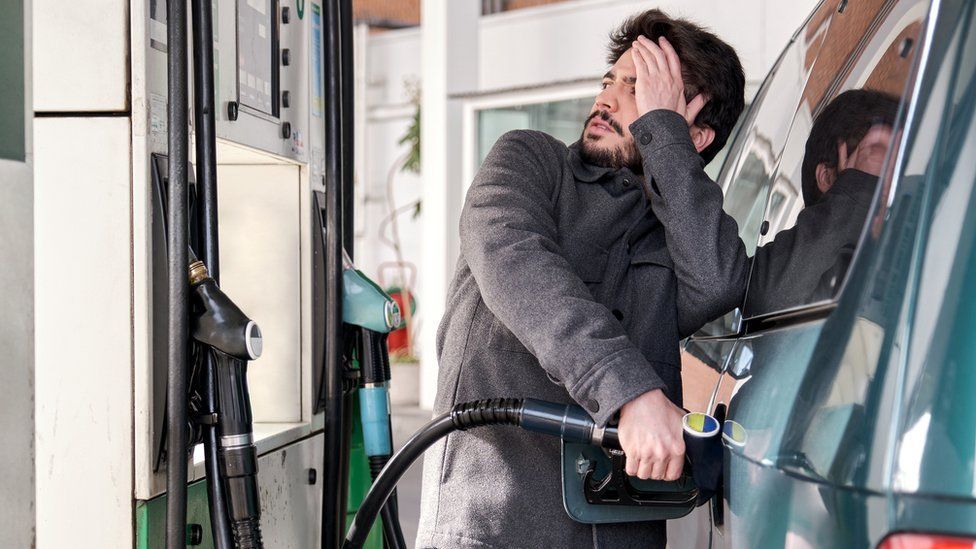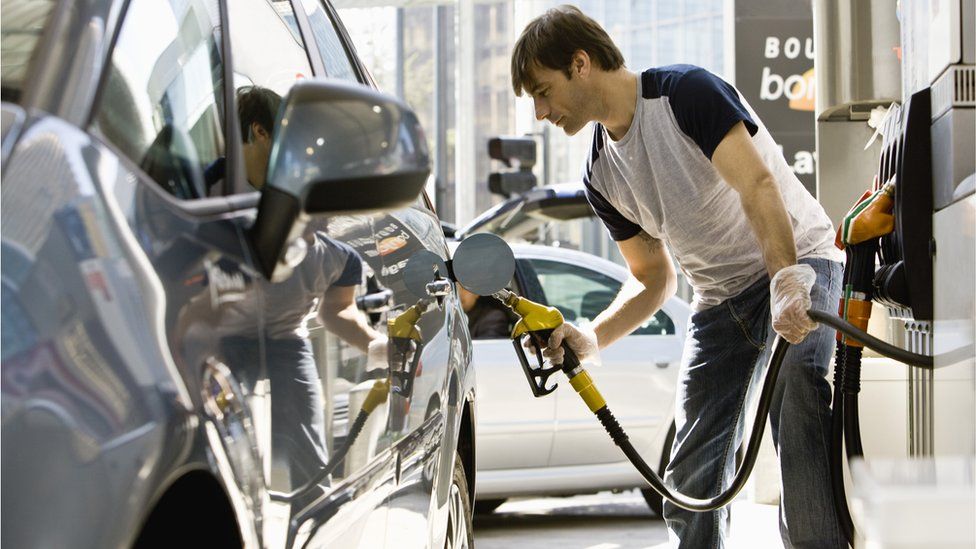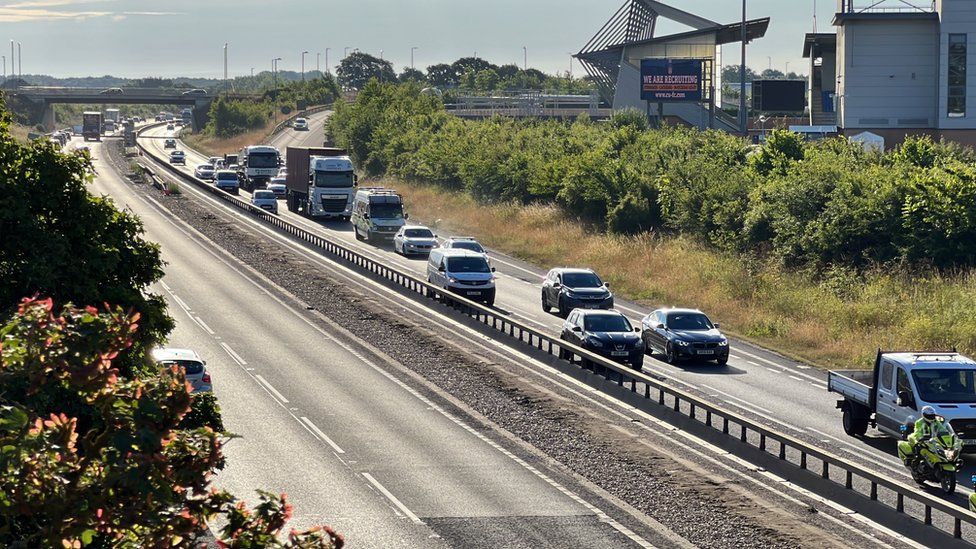
Protesters have begun to target motorways in Wales, Essex and Devon, in a demonstration over high fuel prices.
Police have warned there could be “serious disruption throughout the day” as protesters call for a cut to fuel duty.
The action is mainly targeting three-lane motorways and is seeing convoys of vehicles driving slowly in two lanes – leaving the “fast” outside lane free.
The protests began in England and Wales shortly after 07:00 BST.
Rolling roadblocks have brought parts of the M4 to a standstill with convoys travelling towards the Prince of Wales Bridge, which crosses the River Severn between England and Wales, from both directions.
The bridge has been closed in the eastbound direction and police have stopped the protest on the westbound carriageway before the crossing.
Gwent Police Superintendent Tom Harding said the force was seeing “significant delays”.
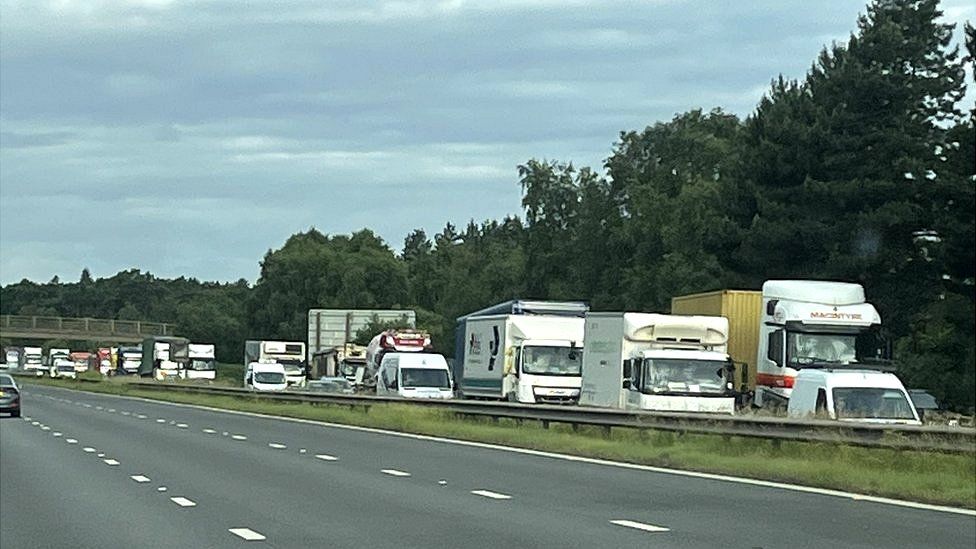
Avon and Somerset Police said two slow-moving roadblocks in its area had potential to cause disruption – one on the M4 westbound, travelling from junction 17 towards Wales, and another on the M5 northbound, due to travel from junction 24 towards Almondsbury Interchange later.
Meanwhile, Devon and Cornwall Police also said it was aware of a go-slow protest heading northbound from Exeter services of the M5.
Later the force said a second protest had begun on the A38 heading north from Ivybridge.
And a column of about 20 vehicles with hazard lights on joined the London-bound A12 near Colchester in Essex.
Police Scotland said it was aware of protests on motorways and trunk roads and urged motorists to drive at an appropriate speed for the road conditions.
But the force warned that journey times could be longer than normal.
In Lincolnshire police blocked junction one between the M180 and M18 forcing protesters to remain on the former, and West Yorkshire police said officers had deployed a “single tyre deflation device” – also known as a “stinger” – at the Ferrybridge services in the early stages of the protest.
The force said the device had not been used, no damage had been done to vehicles and it had since been withdrawn.

Fuel prices have risen to record highs in recent weeks with figures from data firm Experian showing the average price of a litre of petrol at UK forecourts had hit 191.5p and 199.0p for diesel on Sunday.
RAC fuel spokesman Simon Williams said there did not appear to be any sign of retailers reducing forecourt prices despite weekly wholesale costs having fallen for five weeks.
Chancellor Rishi Sunak has said he will carefully consider calls for a “more substantial” fuel duty cut after the 5p per litre reduction implemented in March failed to halt price rises.
Rising fuel prices have been pushed even higher by the war in Ukraine, with Russia, one of the world’s largest oil exporters. facing sanctions.
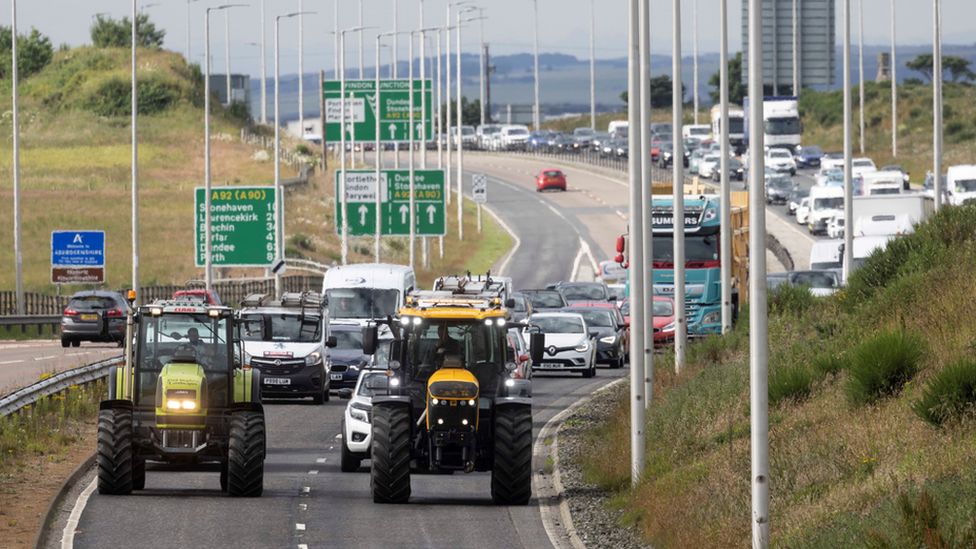
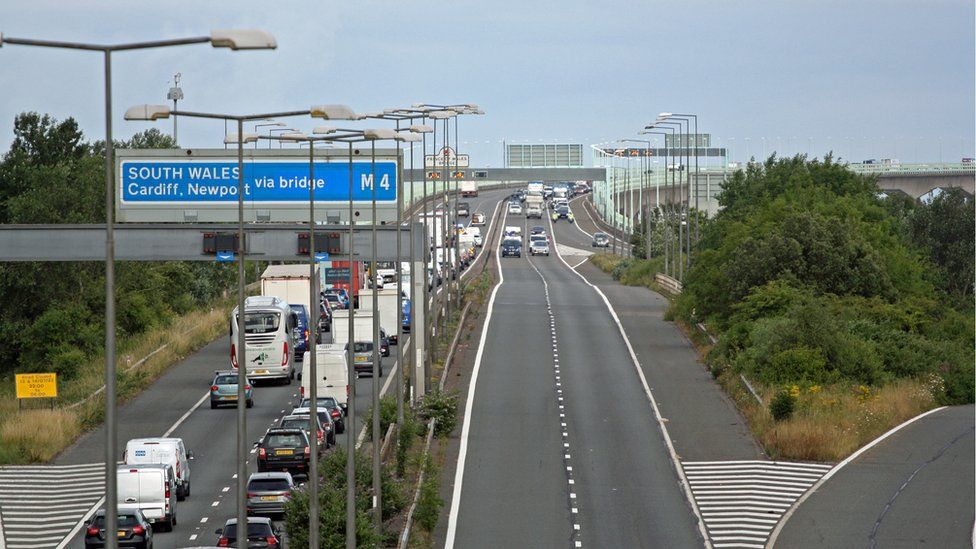
The government has said while it understands people are struggling with rising prices and have a right to protest, “people’s day-to-day lives should not be disrupted” and warned traffic delays “will only add to fuel use”.
Howard Cox, founder of campaign group FairFuelUK, said other countries had cut fuel duty more than the UK and called for a reduction of at least 20p.
While he said his organisation was not involved in the protests he said there was an appetite for them and if the government did not deliver on the issue there could be “some serious escalation of protests”.
One of those taking part in the protest was Scunthorpe truck driver Tariq Akram who told the BBC his company had added £4,000 to its fuel bill in the past four months because of price rises.
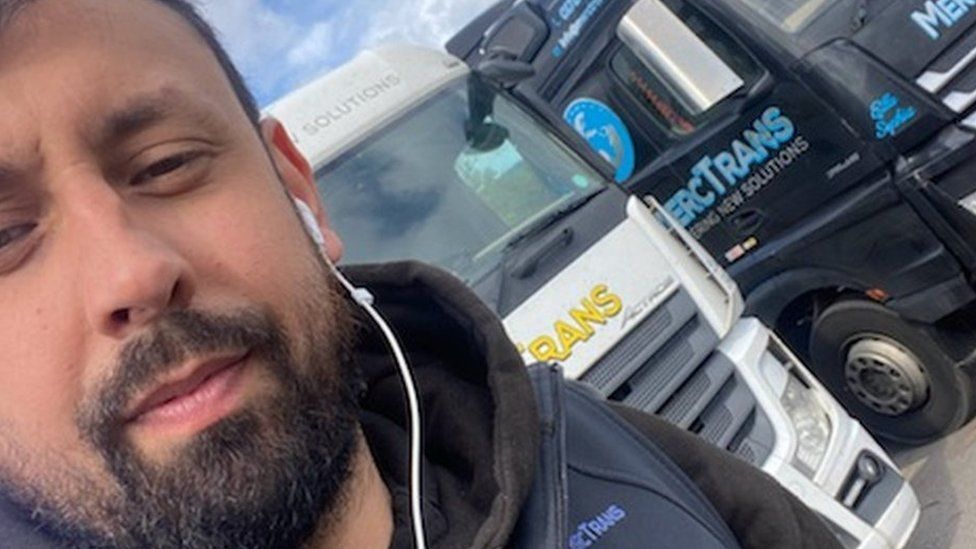
He said his was one of 50 vehicles making the 60-mile journey through Scunthorpe and Doncaster at 20mph.
“The turnout was absolutely fantastic. There were 35 vehicles from our yard alone who took part,” he said.
“At one point, I thought some cars wanted to overtake so I tried to let them by, then I realised they were joining in.”
BBC Radio Humberside’s Amanda White said when the convoy u-turned at the A15 the queues were extraordinary with “hundreds if not thousands of vehicles nose to tail crawling along”.
She said while some motorists were angry others supported the protest and some even joined the convoy in their own vehicles.
Another person taking part in a protest was former HGV driver Vicky Stamper, 41, from Cwmbran, who said she and her partner had to leave their jobs in Bristol because they could not afford the fuel any longer.
“I then lost a job two weeks ago because the company couldn’t afford to put fuel in that many lorries so, last in first out,” she said.

Are you experiencing disruption? Are you a protester? Share your experiences by emailing haveyoursay@bbc.co.uk.
Please include a contact number if you are willing to speak to a BBC journalist. You can also get in touch in the following ways:
- WhatsApp: +44 7756 165803
- Tweet: @BBC_HaveYourSay
- Upload pictures or video
- Please read our terms & conditions and privacy policy
If you are reading this page and can’t see the form you will need to visit the mobile version of the BBC website to submit your question or comment or you can email us at HaveYourSay@bbc.co.uk. Please include your name, age and location with any submission.
